Affiliate links on Android Authority may earn us a commission. Learn more.
The HUAWEI ban explained: A complete timeline and everything you need to know
December 17, 2025
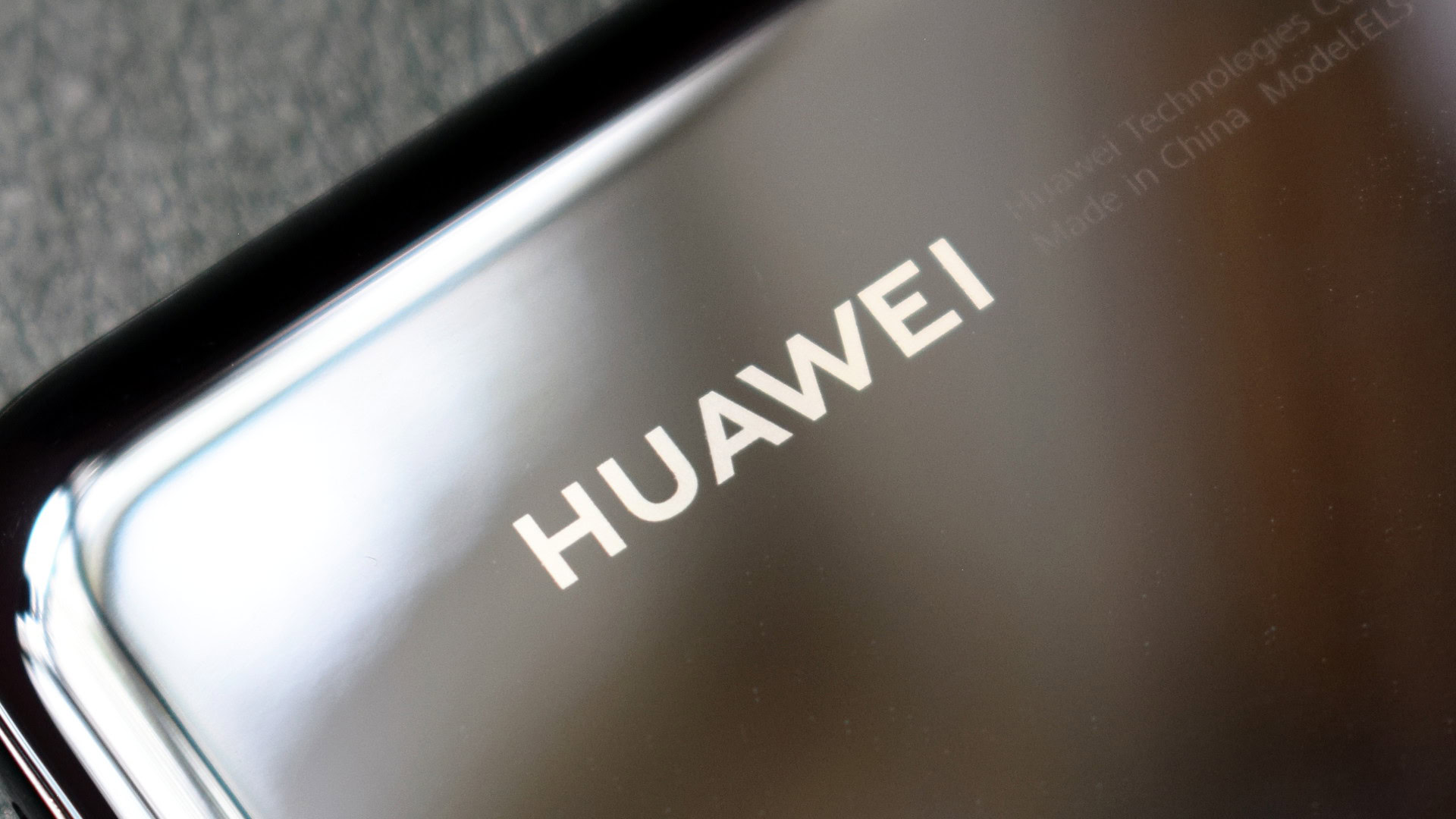
If you’ve been following the tech industry over the past few years, you’ll know that the smartphone market is a very different place than it used to be. Since May 2019, the Chinese company HUAWEI has been under fire from the United States government, resulting in what is colloquially referred to as the “HUAWEI ban.” This ongoing battle forced HUAWEI to change its business practices drastically. Subsequently, the company now has no ability to keep its products on the list of the best Android phones you can buy.
If you are curious about how the HUAWEI-US ban came to be, the details surrounding it, and what it means for HUAWEI going forward, this is the place to be.
Below, you’ll find all the integral info related to the ban. We’ve also got some helpful tips related explicitly to HUAWEI’s smartphones and how the ban affects current and future handsets.
Editor’s note: This HUAWEI ban summary is current as of December 2025. Since this is an ongoing situation, we will regularly update it with new content. However, we advise you to check our latest HUAWEI news articles for the most up-to-date info on HUAWEI.
Why is HUAWEI banned? A (very) quick summary
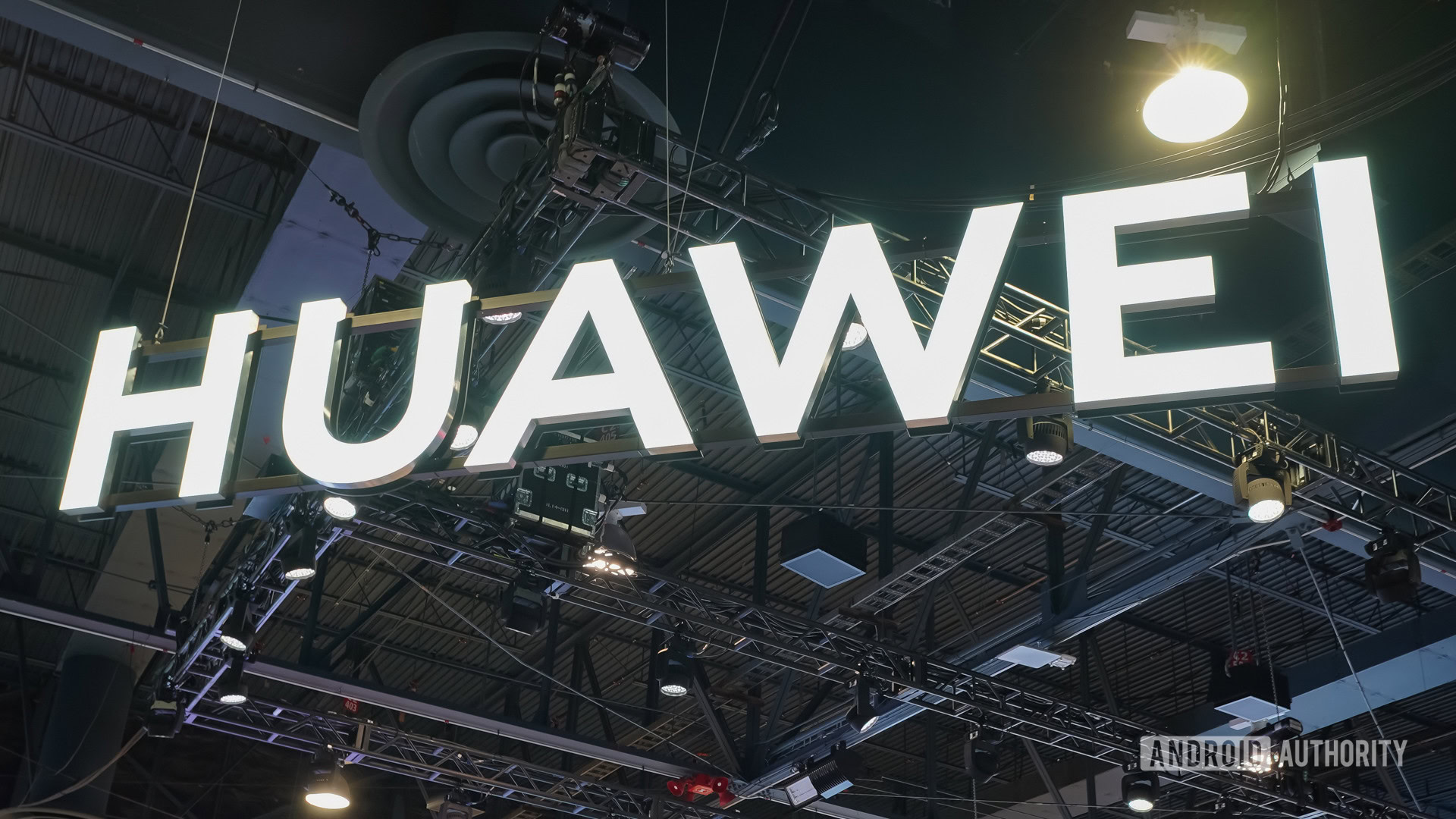
Although this article is an in-depth examination of the HUAWEI ban, you might be happy with a shortened version of the story. The basic gist is as follows:
- HUAWEI, a Chinese company, is one of the largest telecommunications firms in the world. At the start of 2019, the company was expected to become the world’s largest smartphone manufacturer by the end of that year, stealing the crown from Samsung.
- Despite this success, HUAWEI has dealt with numerous accusations of shady business practices over the years. It has also been accused of using its products to spy on other nations, although with no hard proof. Considering the company’s close ties to the Chinese government, this is a worrisome thought.
- In May 2019, then-United States President Donald Trump announced that HUAWEI and several other Chinese companies were now on the “Entity List.” Companies on this list cannot do business with any organization that operates in the United States.
- The HUAWEI ban thus began, with HUAWEI no longer able to work with US-based companies such as Google, Qualcomm, and Intel, among many others. In the case of Google, this means new HUAWEI smartphones can no longer ship with Google-owned applications pre-installed.
With the HUAWEI-US ban in effect, the company had to completely revamp how it creates and releases smartphones. It also faces mounting scrutiny from other nations, many of which rely on HUAWEI for wireless networking equipment.
Since May 2019, HUAWEI has had some minor wins, but the bulk of the ban is still in place. It appears the HUAWEI ban will be in effect in perpetuity, and the company will need to strategize around it until further notice.
Yes, the HUAWEI ban remains in effect as of 2025. We will need to wait and see if it is repealed in the future — though it seems unlikely, especially with President Trump in the White House until 2029.
The HUAWEI ban went into effect on May 15, 2019, as part of an executive order from President Trump. The order banned the use of telecommunications equipment from foreign firms that are deemed national security risks.
No. Donald Trump’s executive order remains in effect. HUAWEI is still releasing flagship devices in Europe and Asia, but they are still not available in the United States.
It does not appear as though the US has any plans to end the HUAWEI ban at this time.
No, the HUAWEI ban only affects products released after May 15, 2019. The HUAWEI P30 Pro launched on March 26, 2019, which means it can still feature Google apps.
HUAWEI history: The background info you need
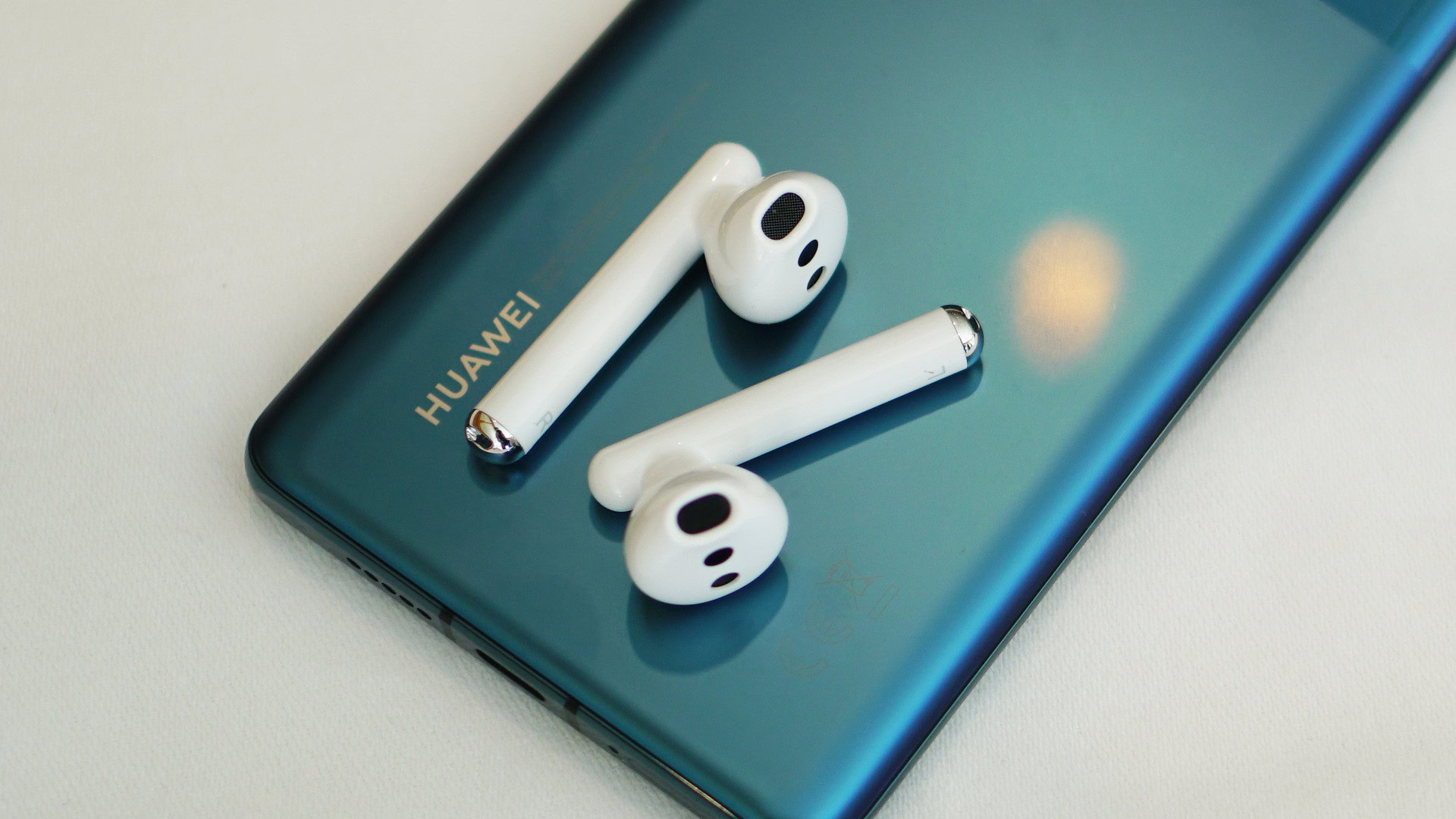
In the grand scheme of things, HUAWEI is a relatively young company, at least compared to other tech giants like Samsung and even Apple. Ren Zhengfei started HUAWEI in 1987 after being discharged from China’s People’s Liberation Army. Zhengfei’s military history helped HUAWEI get some of its first big contracts. This is one of the main reasons HUAWEI is viewed as a de facto branch of the Chinese government.
HUAWEI has faced scrutiny from the beginning for allegedly stealing intellectual property. In brief, the company has repeatedly been accused of stealing technology from other companies over the decades and then passing it off as its own. There are a few times in which this has been proven, such as with a 2003 case filed by Cisco, but there are many other times where accusations didn’t lead to confirmation.
In the late 2000s, HUAWEI was growing at an incredibly fast pace. The company started acquiring other companies to expand its operations. It attempted to buy non-Chinese companies several times, and regulatory bodies would block the sale. This happened in the US and the UK, among other areas. Each time, the reasoning behind the block would be related to HUAWEI’s deep ties to China and the possible security threat that it represented.
Eventually, HUAWEI started making smartphones. Its phones became popular immediately as they were well-designed devices with very reasonable price tags. In 2016, HUAWEI boasted it would be the world’s largest smartphone manufacturer within five years. By 2018, it had taken second place ahead of Apple and just behind Samsung. This is a remarkable feat, considering HUAWEI was handicapped by not having any presence in the United States, now the world’s third-largest market.
Donald Trump, China, and the ongoing trade war
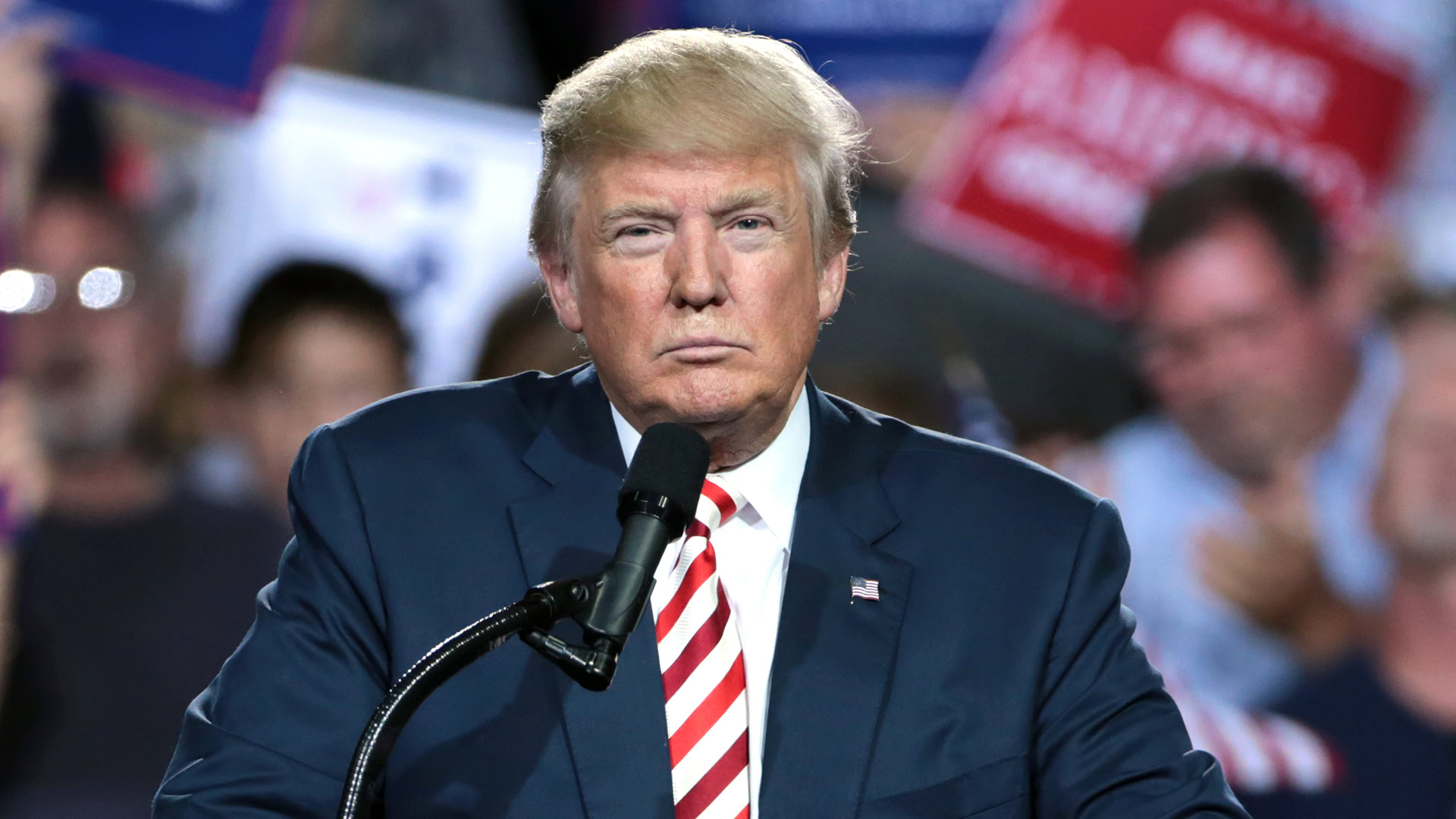
While HUAWEI was growing at an astounding rate in 2018, all was not well regarding its home country. Donald Trump started to flex his power as POTUS to combat China and its “unfair trade practices,” as he called them. This began the still-ongoing US/China trade war.
Although the trade war has much to do with politics, tariffs, and international law, it also touches on intellectual property theft. Since HUAWEI has a reputation as a repeat offender regarding IP theft, this put the company in Trump’s crosshairs.
A major aspect of the US/China trade war is IP theft, something that has dogged HUAWEI's reputation for decades.
However, critics at the time noted that a long-term US/China trade war would hurt both countries significantly. Because of this, it was assumed that Trump would try to strongarm deals from China that would be advantageous to the US and then be done with it. This isn’t how things went, though.
Even though the trade war is associated very closely with Donald Trump, it is actually one of the few political moves he’s made with bipartisan support. President Joe Biden, who entered the White House in 2020 after the HUAWEI ban took effect, made no efforts to remove the ban or weaken the US/China trade war. Now, with Trump back in the White House and pushing more tariffs than any other President in history, there are no signs of US/China relations getting better.
The HUAWEI ban begins on May 15, 2019
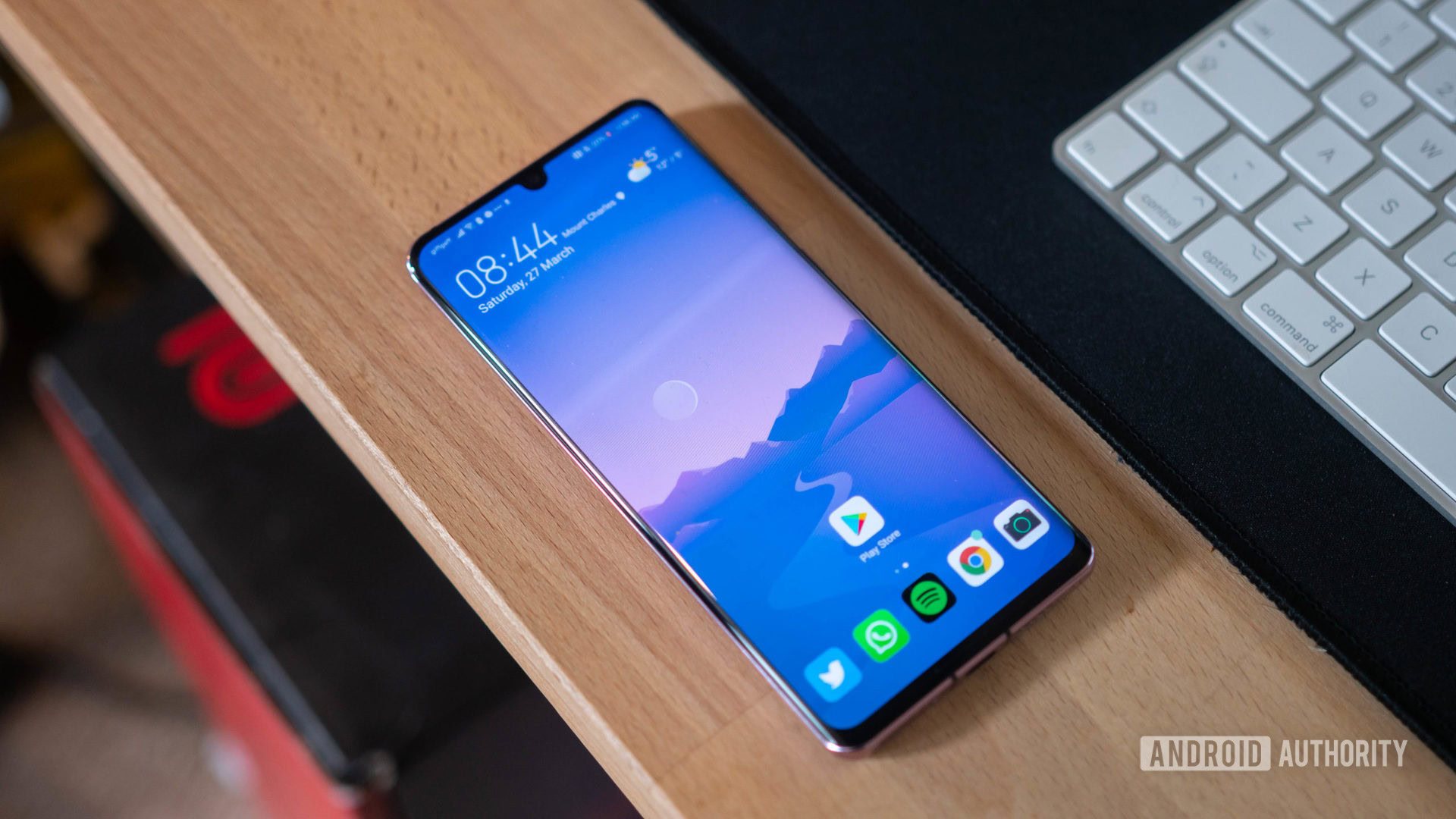
On May 15, 2019, President Trump issued an executive order that bans the use of telecommunications equipment from foreign firms deemed a national security risk. The order itself doesn’t mention HUAWEI (or even China) specifically. However, the US Department of Commerce created what it refers to as an “Entity List” related to the order that does contain HUAWEI’s name.
Since the order didn’t reference HUAWEI specifically, its effect on the company and its various lines of business wasn’t obvious. It appeared the order was primarily directed towards HUAWEI’s telecom operations, which would mean its wireless networking equipment, especially those related to 5G.
Trump's executive order for the HUAWEI ban left out many crucial details.
The order also didn’t make it clear whether the US government would help carriers pay for removing HUAWEI equipment. It also didn’t clarify any punishments US companies would face if they didn’t comply with the order. In brief, the HUAWEI ban seemed serious, but there were too many unknowns to understand where it would go.
HUAWEI, in a statement to Android Authority that day, said this: “Restricting HUAWEI from doing business in the US will not make the US more secure or stronger; instead, this will only serve to limit the US to inferior yet more expensive alternatives, leaving the US lagging behind in 5G deployment.” Even this statement made it seem like Trump’s order would only apply to HUAWEI’s networking gear and not its smartphones or other products.
That all changed a few days later.
Goodbye Google: The HUAWEI Google ban, explained
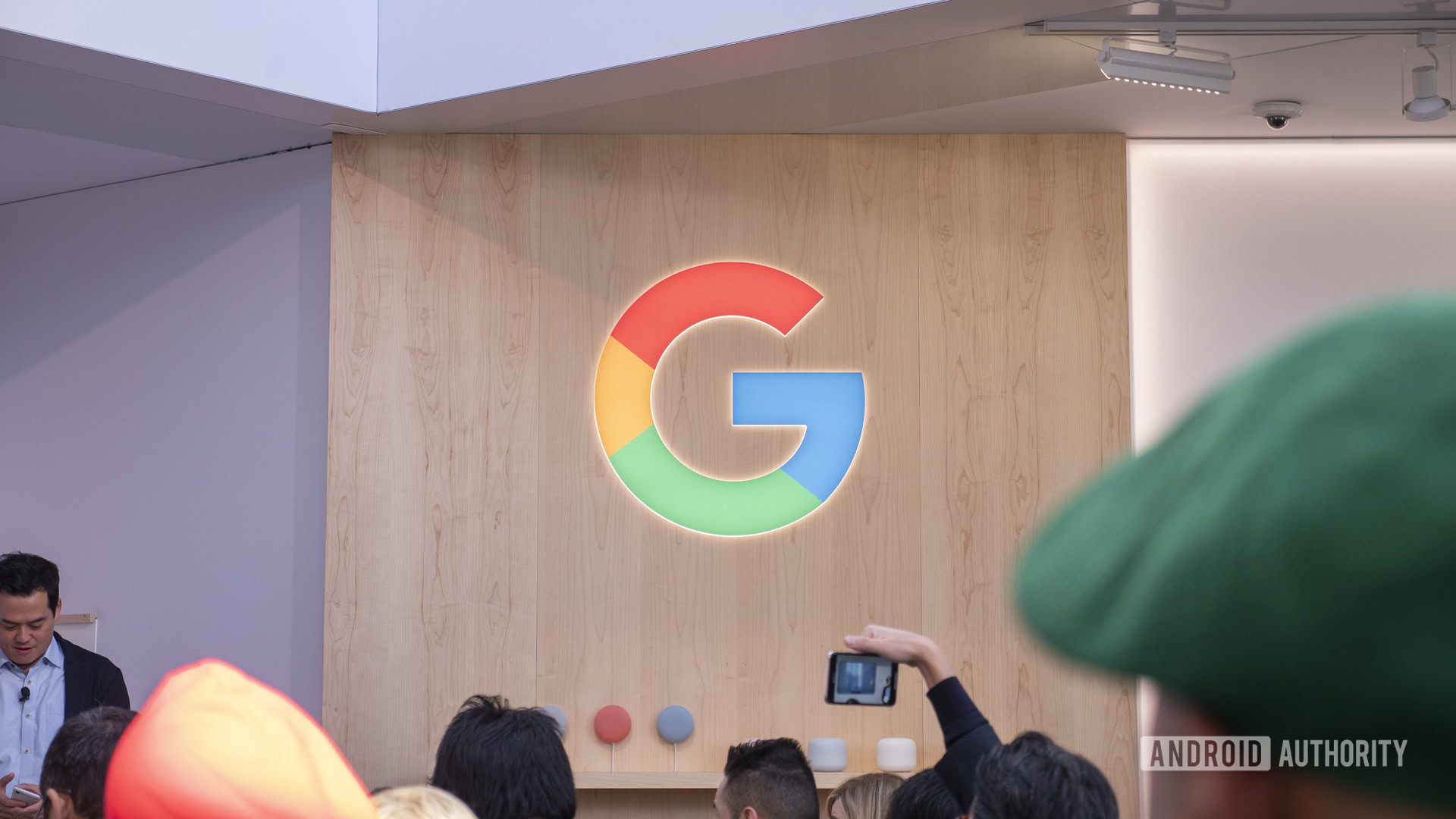
On Sunday, May 19, 2019, Google publicly declared it would comply with Trump’s HUAWEI ban. Interpreting the order’s language, Google determined that the proper course of action would be to remove HUAWEI from Google’s suite of digital products.
This meant that HUAWEI would no longer have access to the fundamentals of Android smartphones. Gmail, YouTube, Google Drive, and even the Google Play Store itself were no longer available for HUAWEI to use on new products.
This news sent a shockwave through the tech world. Remember that at this point, HUAWEI was the second-largest smartphone manufacturer globally, and every single one of its phones rans on Android. Without access to Google apps, millions of HUAWEI smartphone owners were understandably concerned that their phones would suddenly stop working correctly.
When the dust settled, it became clear that HUAWEI phones certified by Google and launched before May 15, 2019, would continue to operate as usual. However, any uncertified phones, tablets, or other products released by HUAWEI after that date would be Google-less.
Not long after Google made its announcement, other US-based companies followed suit. This included Qualcomm, Intel, Arm, Microsoft, and many more.
HUAWEI tries to fight back
HUAWEI wasn’t about to take this lying down. Only a few days after the HUAWEI-US ban took effect, the company issued several sternly worded statements declaring its intentions to fight the order. By the end of May, the company had filed a legal motion declaring the ban unconstitutional. Towards the end of June 2019, HUAWEI filed a lawsuit against the US Department of Commerce over the Entity List.
Unfortunately, these legal maneuvers didn’t bear much fruit. After all, an executive order from the US president isn’t easy to fight.
Interestingly, US-based companies came out in support of HUAWEI while simultaneously cutting commercial ties. Even Google declared that — if given the opportunity — it would want to continue working with HUAWEI. HUAWEI’s biggest telecom rival, Ericsson, also criticized the ban. In addition, tech industry analysts noted that the HUAWEI ban hurts US-based companies, too, because HUAWEI is such a massive business.
HUAWEI found out very quickly that it is not easy to overturn an executive order from the US president.
Eventually, China tried to turn the tables by threatening to create its own Entity List. HUAWEI then upped the ante by accusing the US of cyberattacks and employee harassment. However, the company supplied no evidence to support these accusations, and they led nowhere.
By mid-2020, HUAWEI had apparently accepted its fate. It stopped filing new lawsuits and stopped making any public declarations that it’s still trying to overturn the HUAWEI ban.
In 2021, though, after Joe Biden took over as President of the United States, HUAWEI started making new attempts. HUAWEI founder Ren Zhengfei stated that he would welcome a chat with President Biden. Elsewhere, the company filed a new lawsuit against the FCC related to the HUAWEI ban. However, these efforts proved fruitless.
Full HUAWEI ban gets delays, license system established
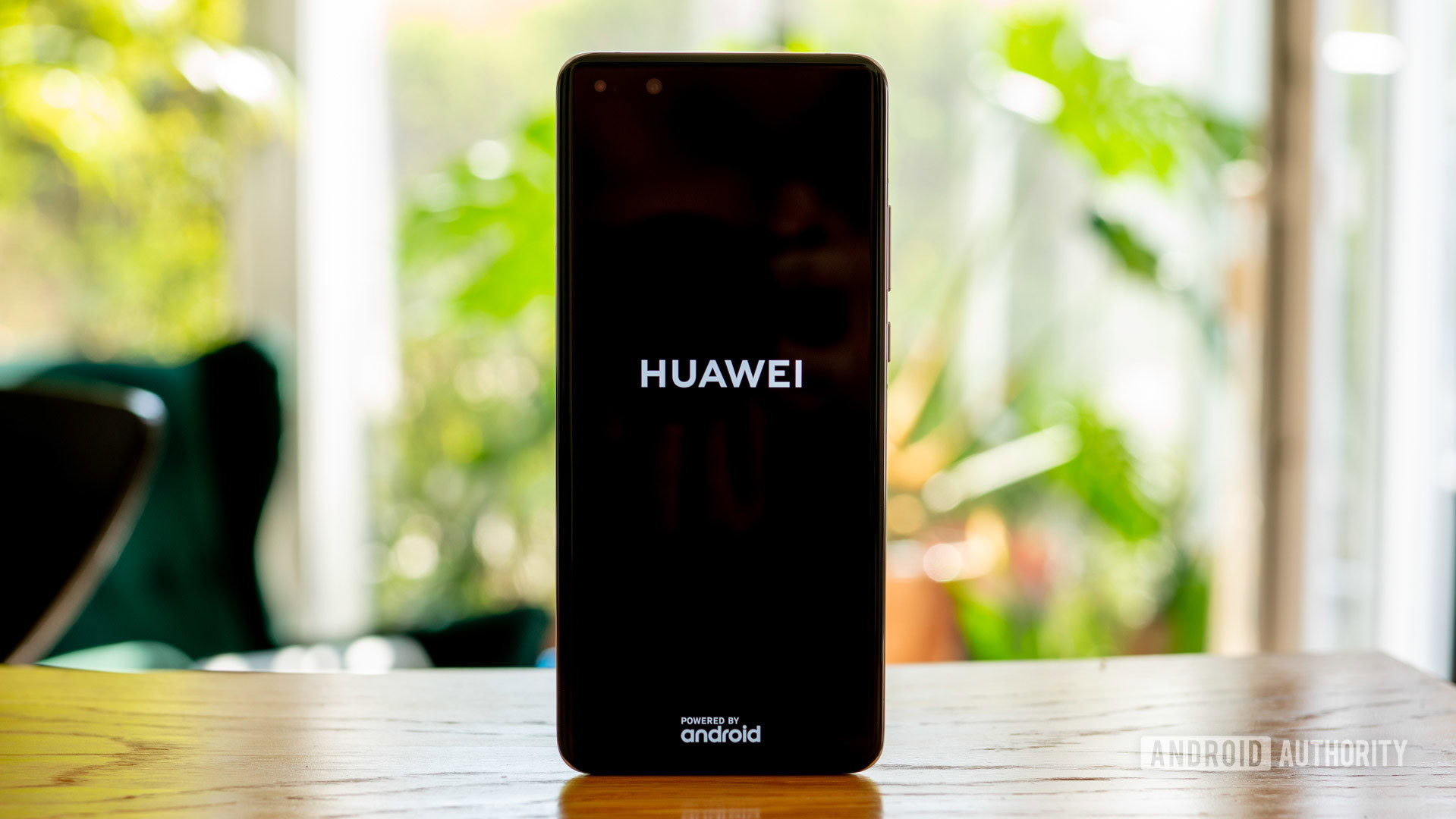
Not even a week after Trump issued the executive order that kickstarted the HUAWEI ban, the US issued a 90-day reprieve of the ban’s full effects. This gave HUAWEI and its clients until August 19, 2019, to make arrangements for the weight of the ban.
As luck would have it, this 90-day reprieve would be extended three consecutive times. By February 2020, HUAWEI had had nearly a year of living without the full ramifications of the ban. That same month, the US government issued a final 45-day reprieve, allowing the HUAWEI ban to take full and permanent effect by April 1, 2020. Before that date arrived, Donald Trump signed a law banning rural US carriers from using HUAWEI equipment.
The US government gave HUAWEI nearly a year before the ban took full effect. Now, though, all bets are off.
While that was all happening, the US government rolled out a licensing system for US firms that wished to work with HUAWEI. The government allegedly received 130 applications for licenses but granted none of them. The government stated that licenses would go to companies whose work with HUAWEI would not pose a security threat. Google — which applied for one of these licenses — apparently didn’t fall into this category.
Towards the end of 2020, companies started to receive approval for partial deals with HUAWEI. Qualcomm, Sony, and Samsung could sell particular pieces of smartphone manufacturing parts to HUAWEI. However, these small wins won’t help the company return to business as usual.
Harmony OS: The alternative to Android
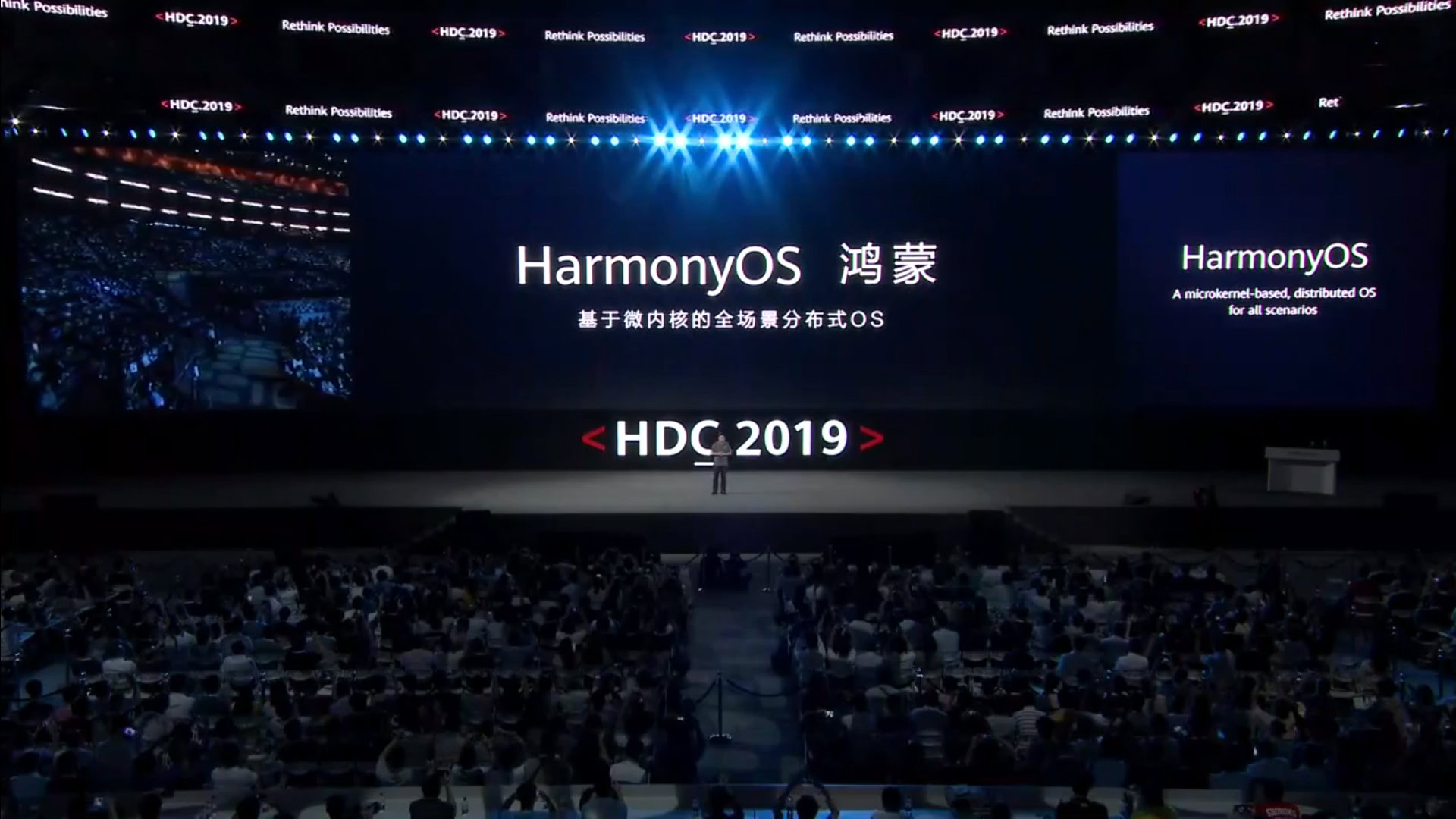
While HUAWEI cannot use Google-owned services and products in its phones, that doesn’t mean it can’t use Android itself. Android is an open-source operating system, which means that any person or company can use it for whatever they like without cost. However, many of the integral features of Android that users rely on aren’t included with “pure” Android and are actually owned by Google.
Theoretically, HUAWEI could’ve indefinitely used Google-less Android to power its smartphones and tablets. In the background, though, HUAWEI claimed to have been working on a so-called “Plan B” operating system that would act as a fallback should a situation such as this HUAWEI ban ever come to pass. On August 9, 2019, the company launched “Plan B” as Harmony OS.
When HUAWEI first rolled out Harmony OS, it claimed it was a brand new operating system “based on Linux.” However, Ron Amadeo at Ars Technica gained beta access to an early version of Harmony OS. He discovered that Harmony OS was literally Android 10 with a few cosmetic alterations (the core of Android is also based on Linux, so HUAWEI wasn’t lying, just being deliberately obtuse).
If any company can create a true rival to Android and iOS, it's HUAWEI.
In August 2023, HUAWEI launched Harmony OS NEXT, which some would call the “true” version of the operating system. The NEXT iteration removes the Android layer, making it impossible to install Android-based applications. A year later, in November 2024, HUAWEI announced its intentions to launch the Android-free Harmony OS NEXT on its high-end smartphones, starting with the Mate 70 series and the Mate X6 foldable, in China. Those phones launched with the version of Harmony that still ran on Android, but would get the option to upgrade to Harmony OS NEXT later.
The goal is to have all HUAWEI smartphones launched with Harmony OS NEXT out of the box by the end of 2025.
Most would think that a new OS going up against Android and iOS is a fool’s errand. However, HUAWEI is so huge and has so much influence in China that it’s actually totally capable of pulling that off on its home turf. How it will fare in the rest of the world, though, is less clear.
HUAWEI Mate 30 series launches, first flagships without Google
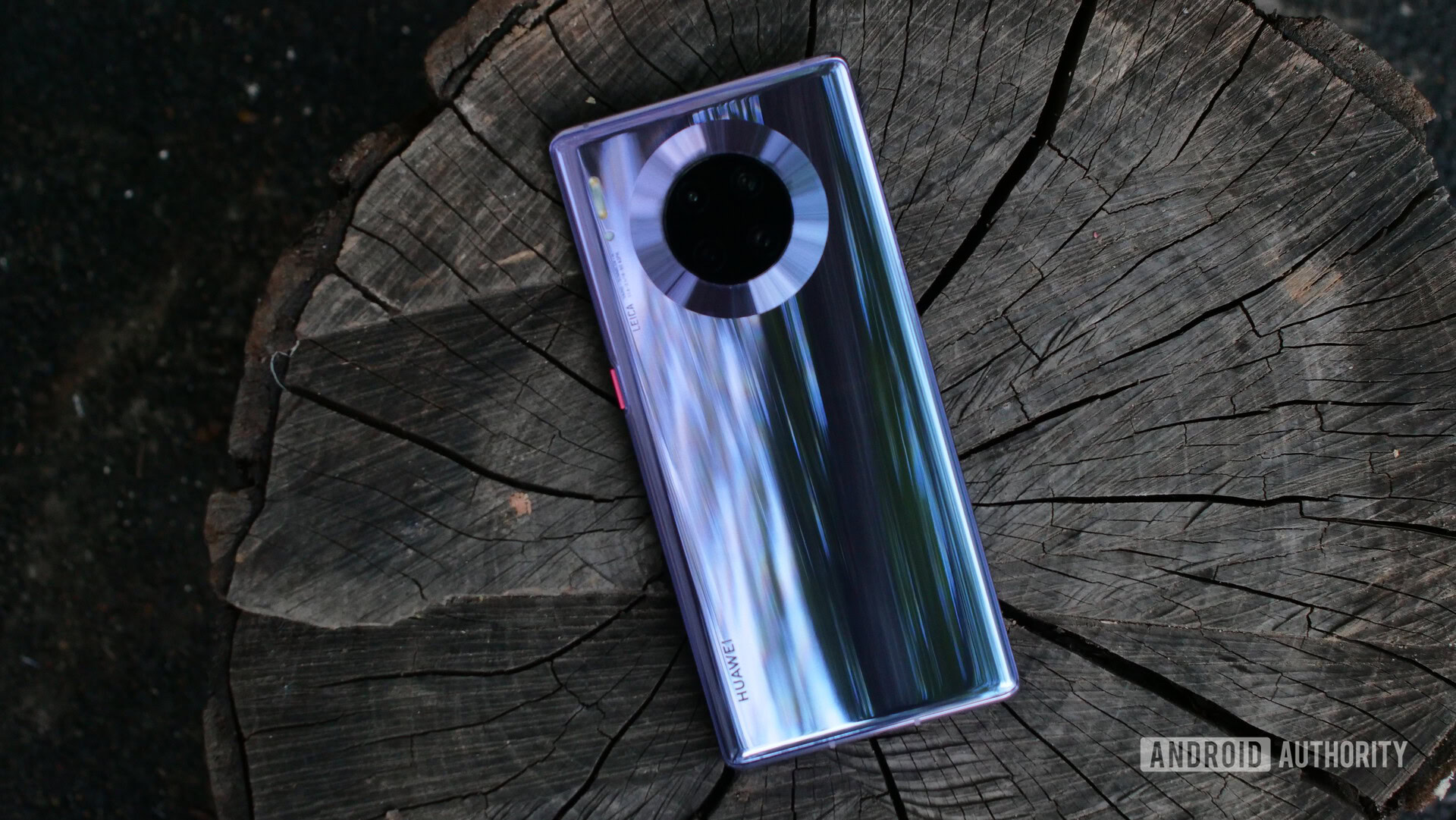
If you’ll remember, the HUAWEI ban only affects products released after May 15, 2019. That means HUAWEI’s most recent flagship launch before that date — the HUAWEI P30 and P30 Pro, which launched on March 26, 2019 — continued to run the full suite of Google apps.
However, HUAWEI traditionally released its Mate series — its other family of flagship phones — in the last half of the year. At first, rumors swirled that HUAWEI simply would skip the HUAWEI Mate 30 Pro launch. Ultimately, though, it went forward with the launch of a flagship phone without any Google apps whatsoever.
The HUAWEI Mate 30 Pro was the first bona fide flagship from the company to launch without any Google apps.
For the first few months, the phone was only available in China and several other smaller countries. Eventually, it made its way to the West (although not the US). The phones received stellar reviews, but few publications would recommend consumers buy the device due to its software shortcomings.
Unbelievably, the Mate 30 series still sold exceptionally well. Never underestimate the enormous population of China supporting one of their own. However, outside of China, the phone only made it into the hands of die-hard HUAWEI followers.
A workaround: HUAWEI repackages older devices
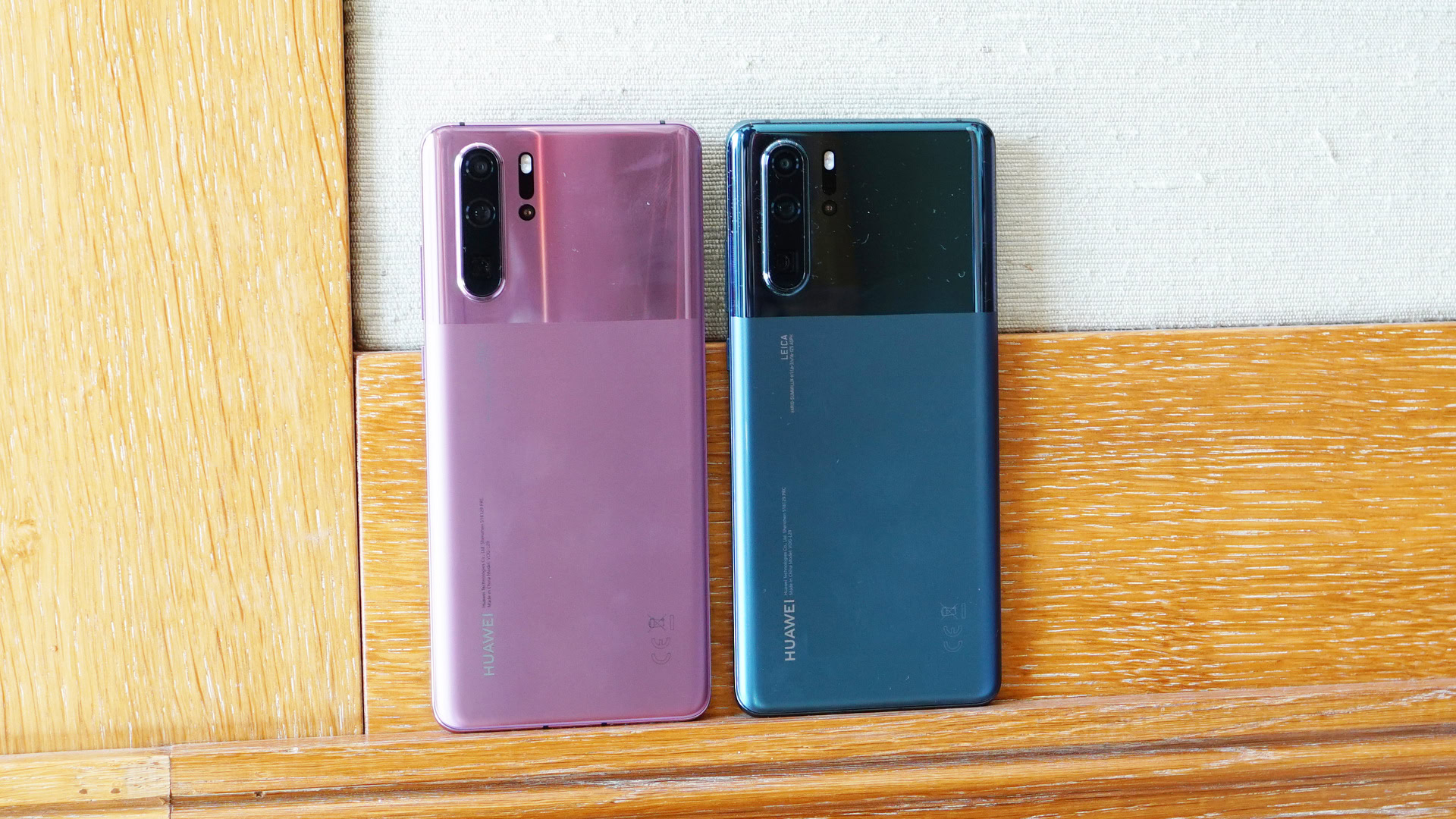
HUAWEI quickly found a loophole related to the HUAWEI ban and Google’s adherence to Trump’s executive order. The company realized that Google approves Android phones not based on their name or design but only on a few core components — most specifically, the processor. This means that HUAWEI could rebrand and repackage a phone that Google approved prior to the ban and resell it without violating the order.
Obviously, this wasn’t a long-term solution to the company’s woes. HUAWEI couldn’t perpetually re-release the P30 Pro over and over again, for example. However, that didn’t stop it from doing just that — twice. First, it issued two new colorways for the P30 Pro series, which it announced in September 2019. Then, in early May 2020, it announced its intention to launch what it called the HUAWEI P30 Pro New Edition, which added yet another new colorway and lowered the price.
HUAWEI’s then-subsidiary HONOR also got into the re-release game by rebranding a few of its phones. Ultimately, this was a last-ditch effort to milk every dollar out of the most recently approved phones. Google and the US government made no publicized efforts to stop HUAWEI from doing this.
HUAWEI in 2020: A very different environment
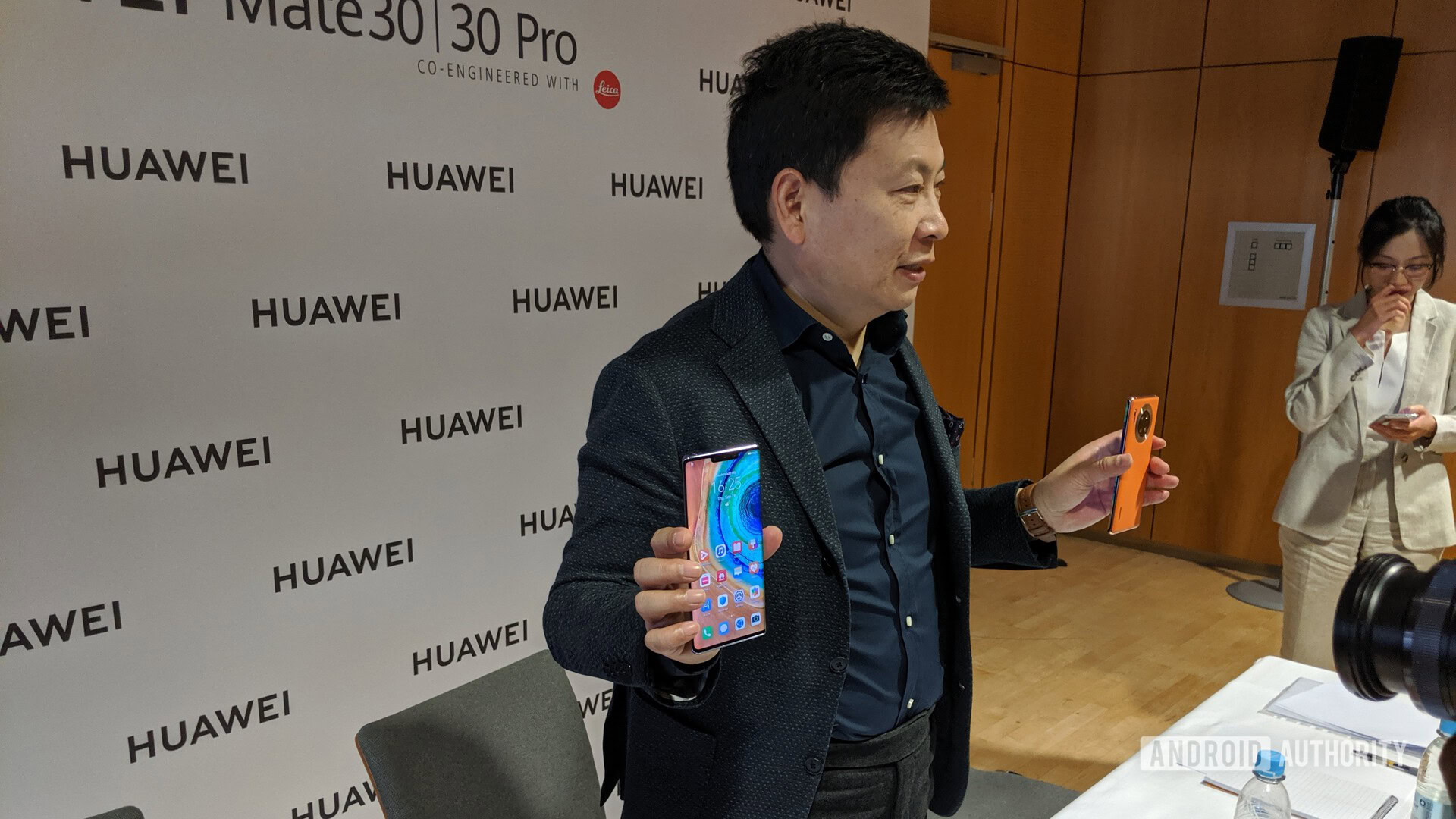
Throughout 2019, HUAWEI probably hoped the US government would either weaken or remove the ban entirely. However, by the time 2020 came around, there were no indications that the HUAWEI ban was going to let up any time soon.
This put the company’s standing in the smartphone market in serious doubt. If you’ll remember, HUAWEI originally boasted in 2016 that it would be the world’s number-one smartphone manufacturer by the end of 2020. In early 2019, it was nearly a certainty that it would achieve that goal a full year ahead of schedule. Now, with the HUAWEI ban, the company’s long-running string of success was poised to come to a screeching halt.
Without Google apps on its phones, HUAWEI can't compete outside of China. In 2020, the company needed to start developing a way to fix that problem.
Although the Mate 30 series had sold well in HUAWEI’s native China and made comfortable sales throughout the rest of the world, it was no runaway success. Consumers outside of China simply aren’t ready for a premium smartphone that can’t access the Google Play Store or even popular third-party apps such as Uber.
HUAWEI’s answer to this was App Gallery — its proprietary Android apps store. Like the Play Store or Samsung’s Galaxy Store, App Gallery hosts a bunch of apps you can install on your phone. HUAWEI is spending millions on enticing developers to port their apps to App Gallery with varying degrees of success. While App Gallery has undoubtedly come a long way in a short period of time, it’s by no means a solid replacement for the Play Store.
These efforts, though, paved the way for HUAWEI’s next flagship phones.
HUAWEI P40 and Mate 40 series: Still no Google
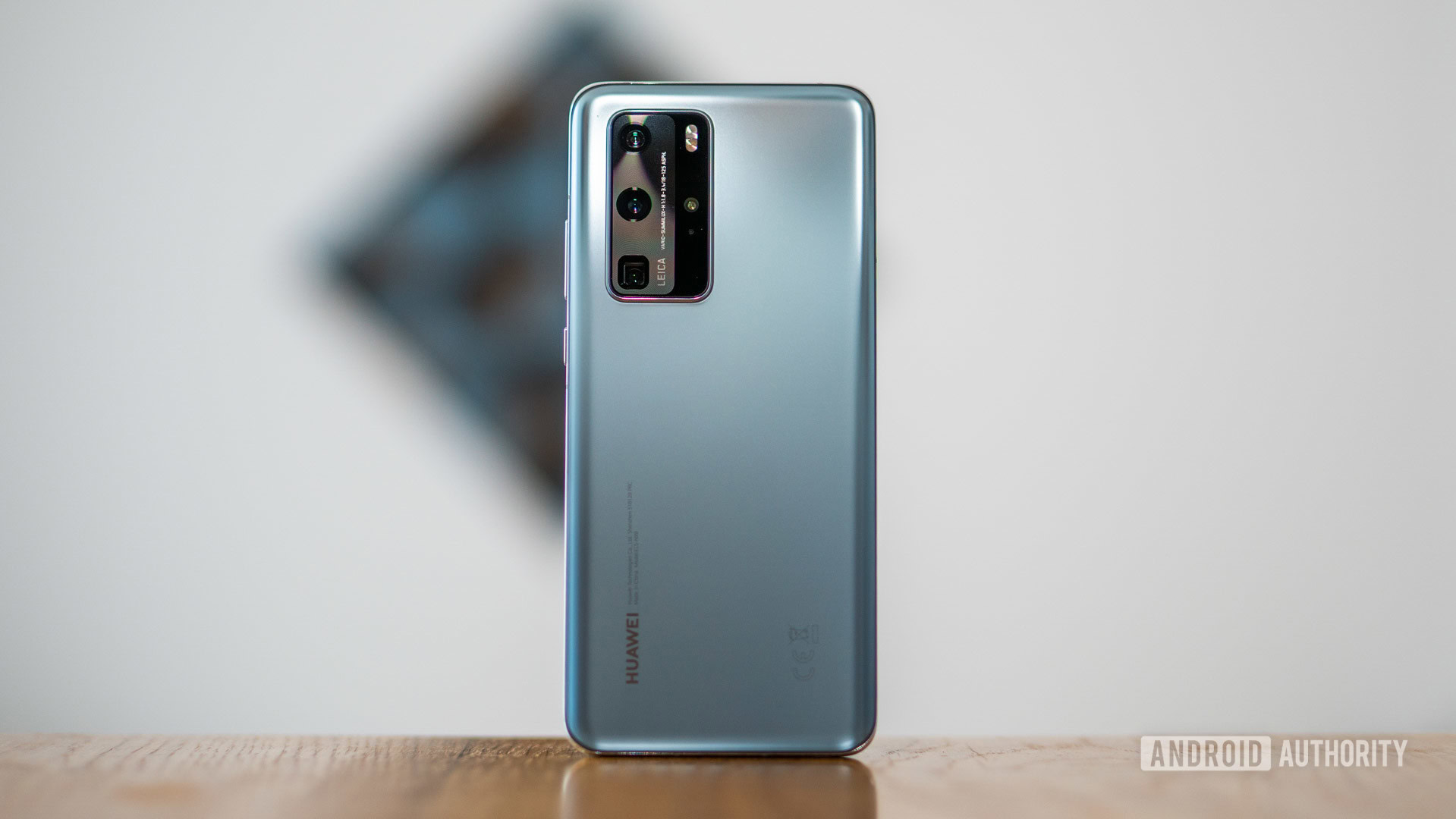
On March 26, 2020, HUAWEI unveiled the HUAWEI P40, P40 Pro, and P40 Pro Plus. The three phones feature all the flagship hardware one would expect from a P series device, including an absolutely incredible rear camera system.
On October 22, 2020, HUAWEI unveiled the Mate 40, Mate 40 Pro, and Mate 40 Pro Plus. These phones also were marvels when it comes to hardware and design.
Of course, none of the phones had Google apps. All the hardware in the world can’t make up for that.
As with the Mate 30 series, the P40 and Mate 40 series received great reviews. Once again, though, most publications — including Android Authority — advised against buying the phones due to the lack of Google services. Over the years, most Western publications have simply stopped reviewing most HUAWEI phones.
HUAWEI’s sales peak and then slide
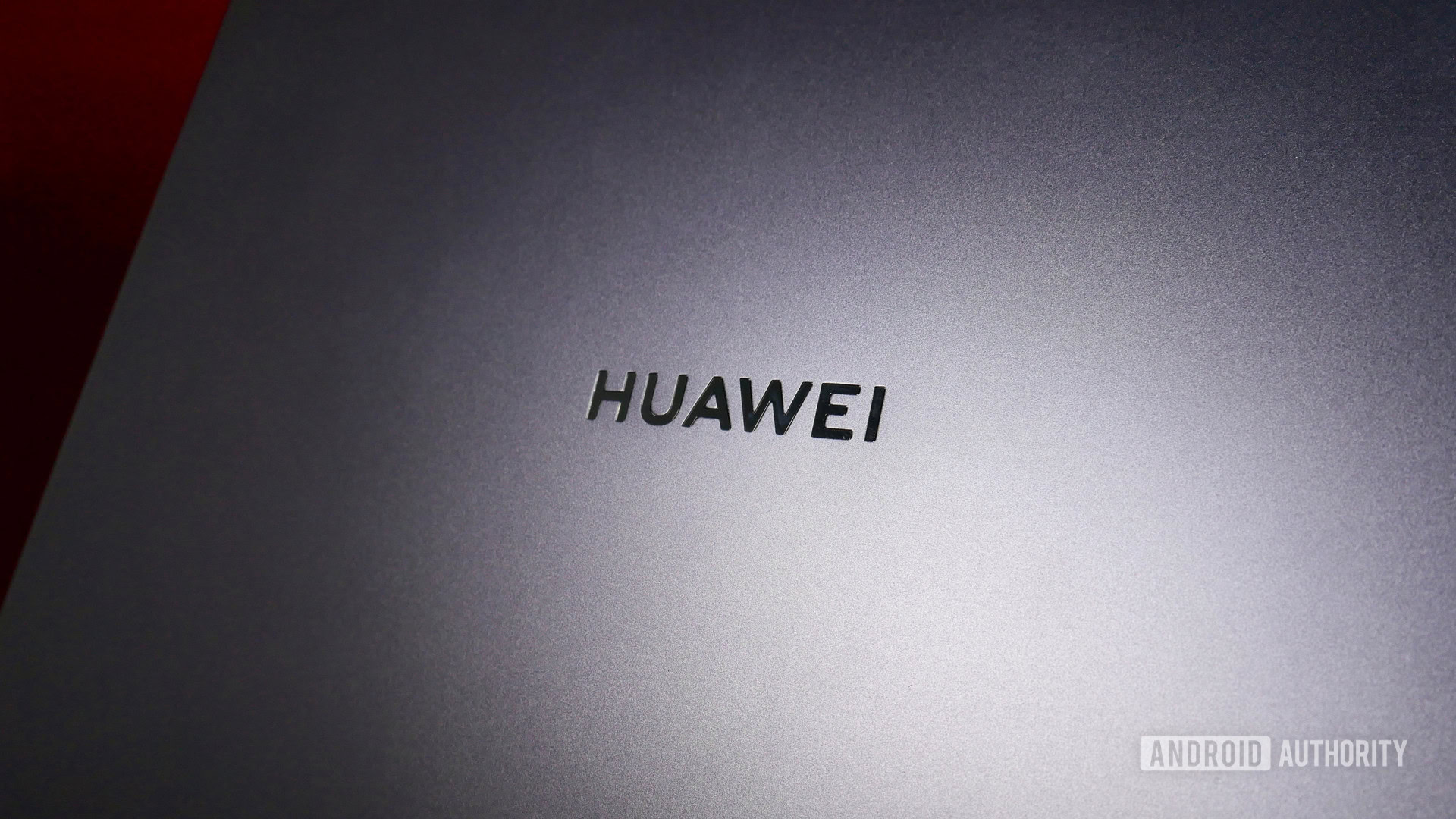
You might think that throughout 2020, HUAWEI would have been struggling to stay afloat. However, HUAWEI actually made good on its promise and passed Samsung as the number one smartphone manufacturer as assessed by units shipped.
How is this possible? As mentioned before, you should never underestimate the power of 1.4 billion Chinese citizens all backing up their beloved homegrown brand. Also, don’t forget that HUAWEI doesn’t just make smartphones. It also still supplies networking systems to multiple countries all around the world.
However, HUAWEI couldn’t sustain that momentum forever. By the end of 2020, the company saw its market share dwindle. Samsung once again became the world’s largest smartphone manufacturer. Meanwhile, 2021 proved to be a dismal year for HUAWEI’s smartphone division.
HUAWEI dropped out of the top-five smartphone OEMs by the end of Q1 2021 and limited the HUAWEI P50 series to China only. By 2024, HUAWEI was not even among the top ten global smartphone manufacturers.
HUAWEI ban brings the end of Kirin chipsets
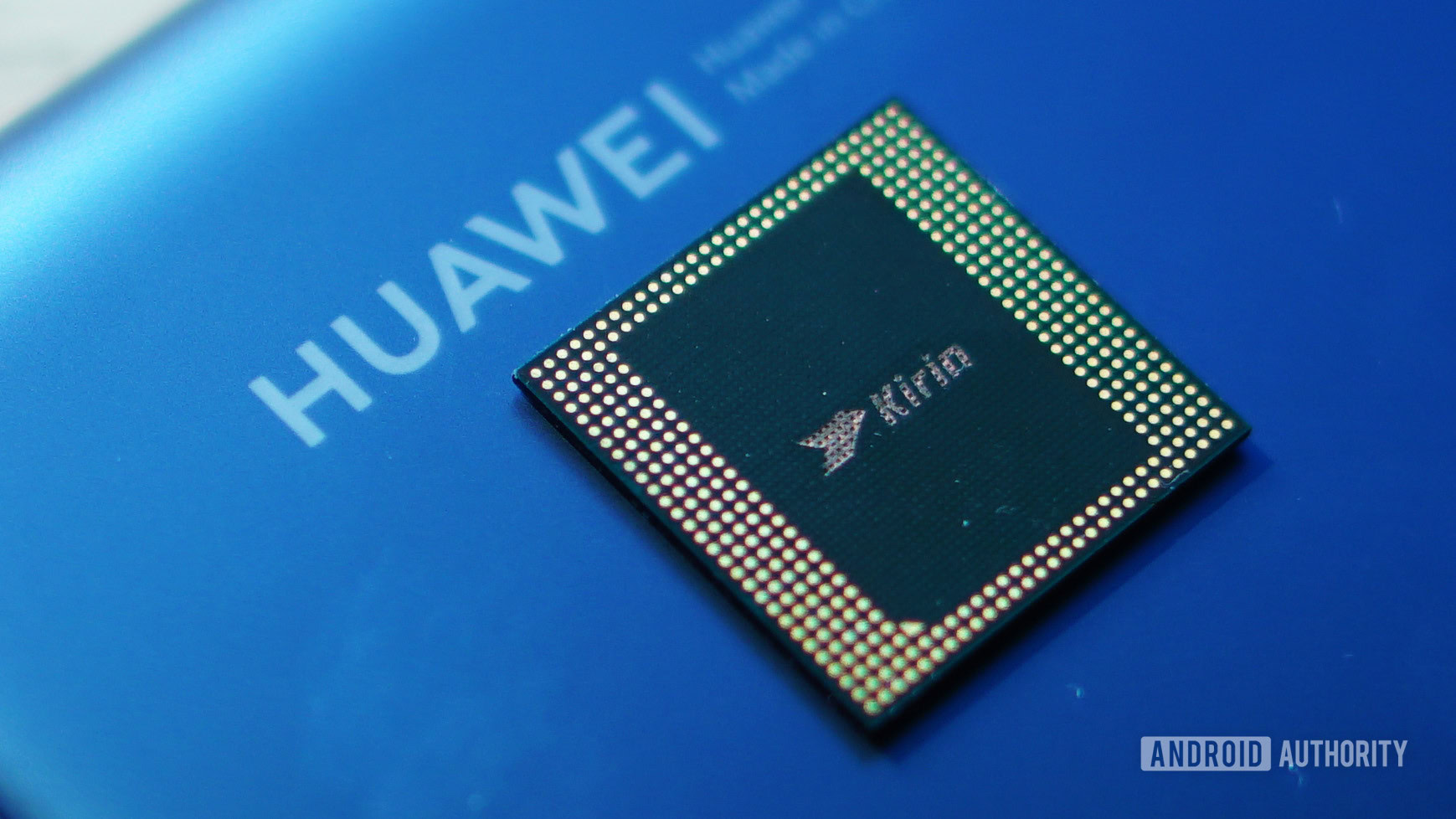
Unlike many smartphone manufacturers, HUAWEI almost exclusively uses its own chipsets in its smartphones and tablets. HUAWEI designs its Kirin processors and then they are produced by a Taiwanese company called TSMC.
At first, TSMC assured HUAWEI — and the tech industry in general — that it would continue to produce HUAWEI’s Kirin chipsets. However, it rolled back on that declaration, likely because the HUAWEI ban was now in full effect (i.e., all the extensions were over).
Without TSMC, HUAWEI is essentially unable to create Kirin chipsets. At first, we assumed the Mate 40 would be the final phone launched with a Kirin chipset. However, rumors abounded that the 2021 HUAWEI P50 could have the same Kirin processor as the Mate 40. It turns out that HUAWEI went half-and-half, with some P50 models having leftover Kirin chips while others have Qualcomm chips.
HUAWEI sells off HONOR sub-brand
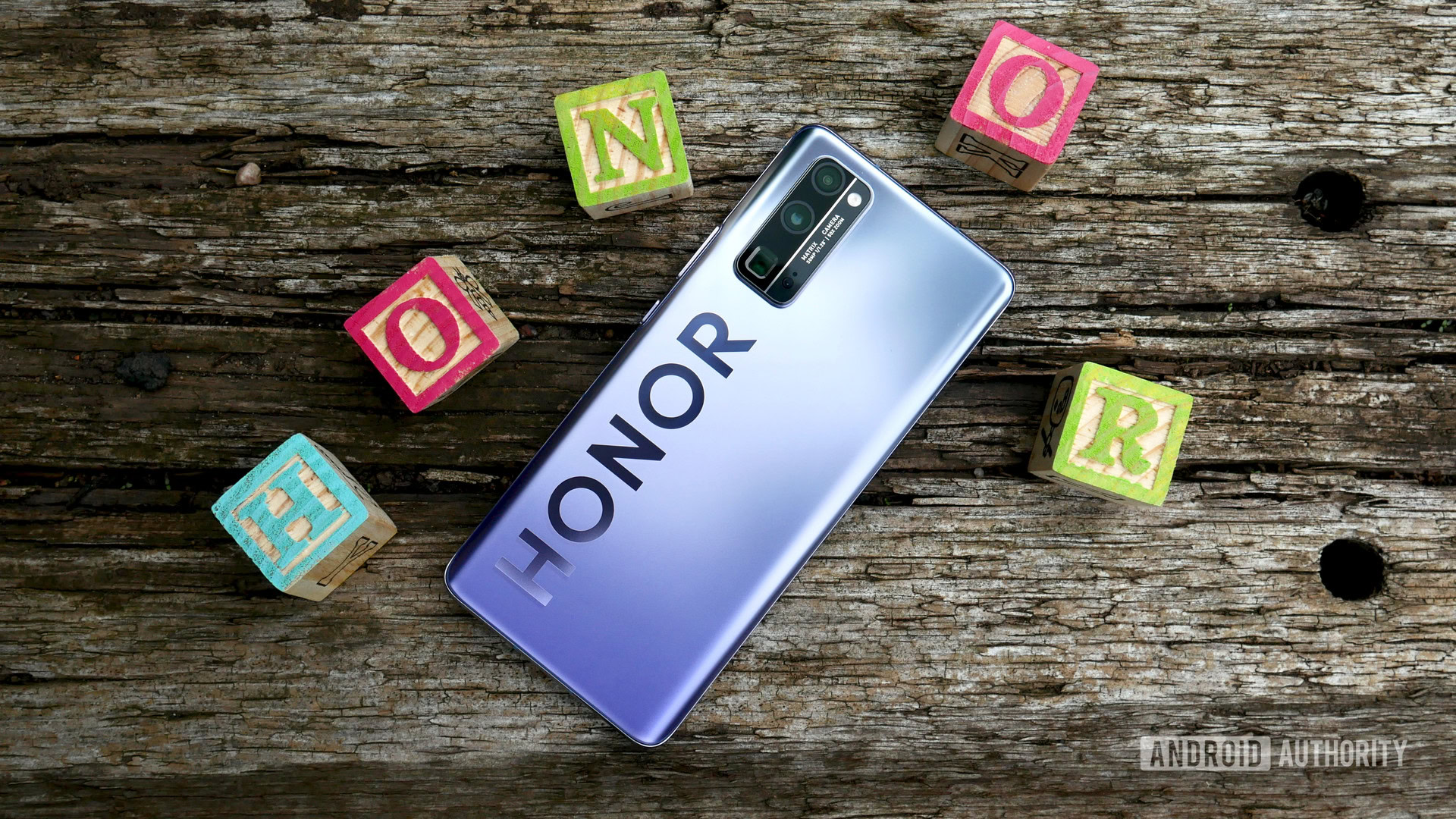
Although HUAWEI’s sub-brand HONOR operated semi-independently, it was still officially part of the HUAWEI family. This meant that the effects of the HUAWEI ban carried over to it. In November 2020, HUAWEI sold off HONOR to a Chinese company called Shenzhen Zhixin New Information Technology Co.
In an official statement on the matter, HUAWEI attributed the quick sale to the “tremendous pressure” it’s under from the US government.
With the completion of this sale, HONOR had no direct connection to HUAWEI. This freed it up to act as its own brand without any of the limitations related to the US sanctions.
In late January 2021, HONOR launched its first phone since leaving HUAWEI: the HONOR V40. However, it and a few other phones it launched shortly thereafter were China-exclusive. HONOR said the HONOR Magic 3 series would have Google apps onboard and land in Western countries. That never happened, however. It said the same thing in 2022 for the Magic 4 series, but actually followed through this time.
HONOR’s most recent non-foldable phones live in the Magic 8 series, launched in late 2025. Meanwhile, its most recent foldable is the HONOR Magic V5.
2021 and beyond: Can HUAWEI survive?
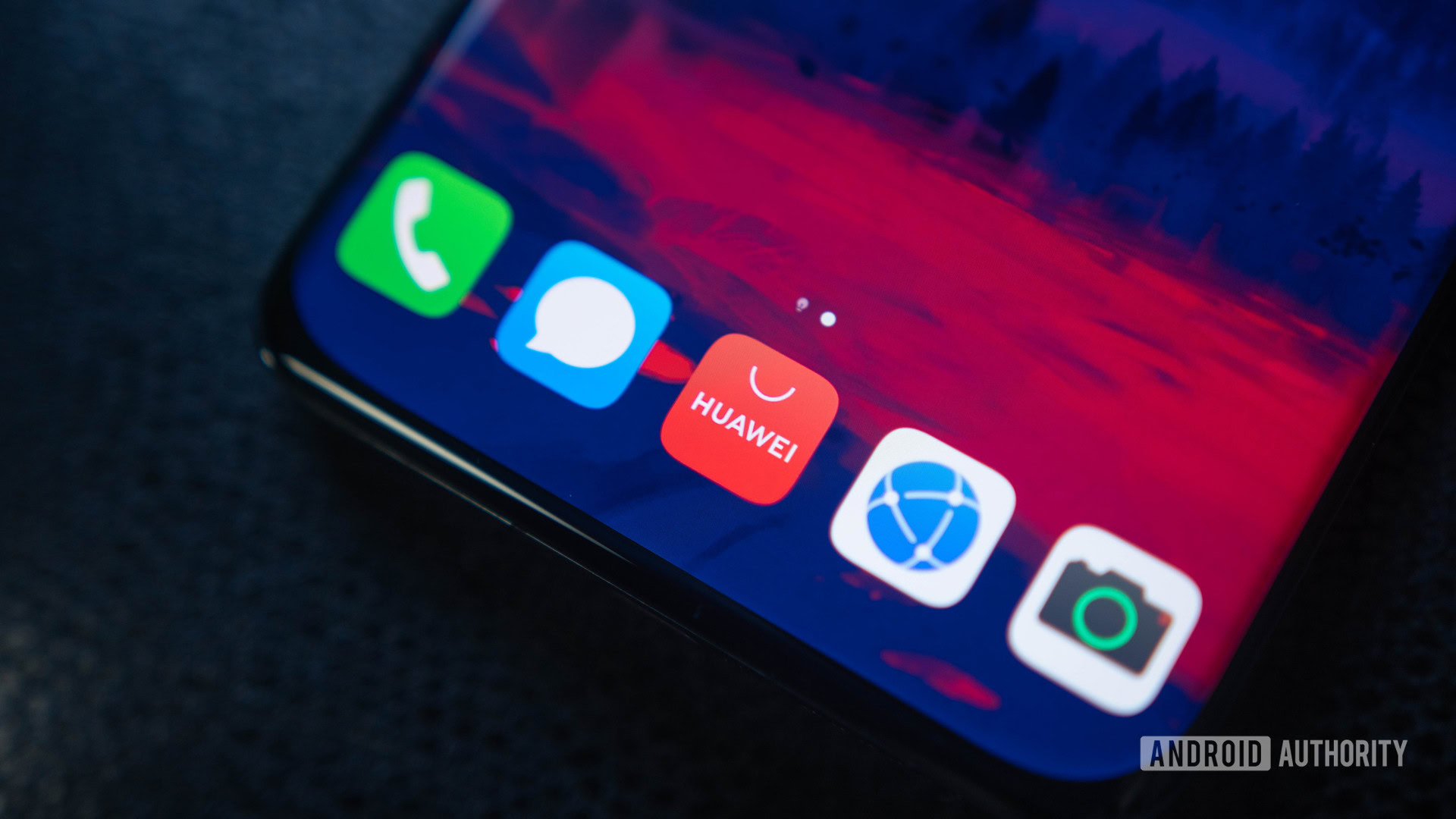
HUAWEI has had a rocky time since May 15, 2019, to put it mildly. So far, it’s weathered the storm pretty well. However, how long can it keep the ship afloat with so much stacked against it?
HUAWEI knows that no matter what, the HUAWEI-US ban can’t touch its Chinese business. The company is so beloved in China that it could become a China-only brand and survive handily for decades. HUAWEI isn’t the kind of company that would roll over that easily, though.
As far as we can tell, HUAWEI plans to move forward with its usual plans of releasing at least one major flagship phone each year and other smaller launches whenever it’s appropriate. It can’t use Google apps, but App Gallery is getting stronger. Now that Harmony OS NEXT exists, it isn’t even depending on open-source Android. It is truly on its own.
The question then becomes how long the company can keep this up before the smartphone division loses more money than it makes. But don’t write HUAWEI off — it’s already proven it can survive things that many other companies couldn’t.
Do you currently own a HUAWEI phone?

If you currently own a HUAWEI or HONOR phone, you might have some questions about how the HUAWEI ban affects you. Below are some frequently asked questions.
HUAWEI is almost certainly tracking how you use your device — but every smartphone company does this. Smartphone OEMs want to know how often you unlock your phone, charge it, open certain apps, etc., so they can use that info to make better products. However, do not be scared that HUAWEI is actively monitoring you specifically for nefarious purposes. There has never been any evidence to support this claim.
It’s not illegal to own a HUAWEI device anywhere in the world, as far as we know. The HUAWEI ban prevents HUAWEI from working with US-based companies in the creation of its products. It doesn’t apply to consumers who currently own a HUAWEI product and doesn’t prevent them from buying new ones, either.
As long as there are no laws in your location preventing it, you’re free to sell your HUAWEI device. Trump’s executive order says nothing about reselling used HUAWEI products.
You don’t need to worry about this. Although your phone obviously won’t last forever, HUAWEI will not “brick” your device. You can continue using it for as long as it’s physically capable.
If you own a Google-less HUAWEI device launched after June 2019, you’ll continue to see upgrades and security patches on the schedule to which HUAWEI commits for that particular device. However, if you own a HUAWEI phone with Google services onboard launched before May 2019, the phone is now too old to receive security patches and other updates.
Yes. Many companies offer apps and services that do this for you, including Samsung and OnePlus, for example. Keep in mind that some forms of data and some apps won’t be available across different devices, but almost all of your data will transfer successfully.
Please recycle your smartphone using the proper methods. This is a great resource for ethically disposing of your used electronics.
Should you avoid buying HUAWEI phones or other products?
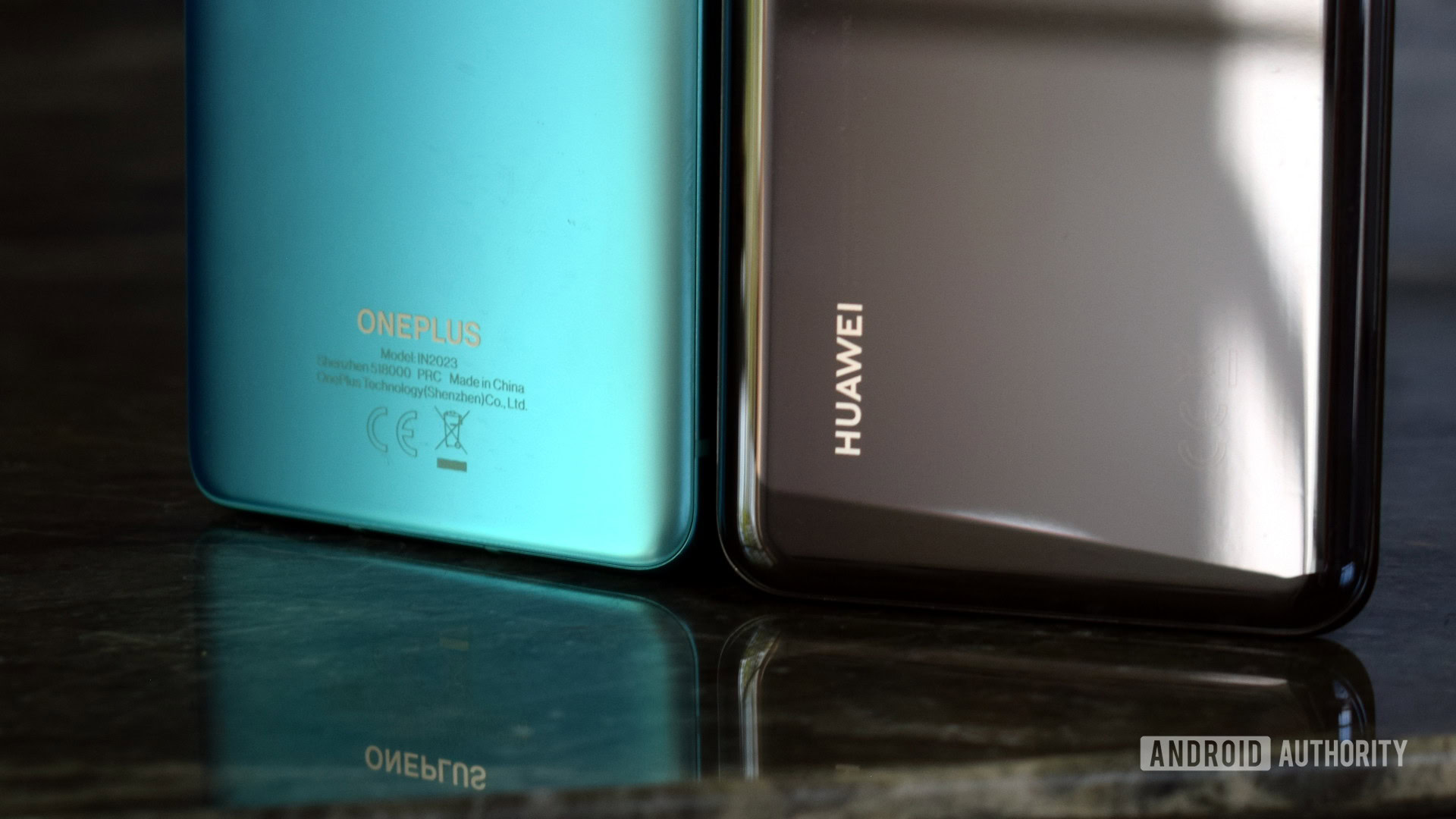
HUAWEI has already released multiple high-profile smartphones since the HUAWEI-US ban took effect. We fully expect there to be more phones on the way, too. As such, you might want to buy a HUAWEI phone even though the ban would prevent it from being a “normal” experience.
Here are the answers to some questions you might have about buying a new HUAWEI device.
Yes, it is perfectly legal to buy new HUAWEI products of all kinds. The HUAWEI ban only prevents HUAWEI from working with US-based companies. This might affect the how and where of buying a HUAWEI phone, but it has no effect on your purchase or ownership of the device.
Yes, you can do all those things and more. The only difference will be that the apps you use to perform those functions will probably be different than the ones you currently use. For example, Google Chrome will not be available on new HUAWEI phones, so you’ll need to use a different app for browsing the web. HUAWEI’s app store (called App Gallery) will have many of the apps you need.
You can sideload Android apps onto HUAWEI phones running Harmony OS (but not Harmony OS NEXT), and a lot of them will work correctly. However, many prominent apps use something called Google Play Services to function. This Google product won’t be on HUAWEI phones launched after 2019. There are several methods that have been used to sideload Google Play Services on HUAWEI phones successfully, but these are extremely unofficial, could potentially damage your phone, have no guarantee of working long-term, and potentially leave your device open to security risks. We do not recommend using this as a viable solution.
HUAWEI is spending millions of dollars on convincing app developers to port their products to App Gallery. As such, there are a lot of apps you use that are already available through App Gallery. HUAWEI adds more all the time. You can install App Gallery on your current Android phone and search for the apps you depend on the most, which should help you decide if it can fully replace the Play Store.
Yes, in almost all cases. Bluetooth is a cross-platform service, so everything should function as you would expect. Obviously, there’s no way to say every single device will work perfectly, but most everything should work.
Thank you for being part of our community. Read our Comment Policy before posting.